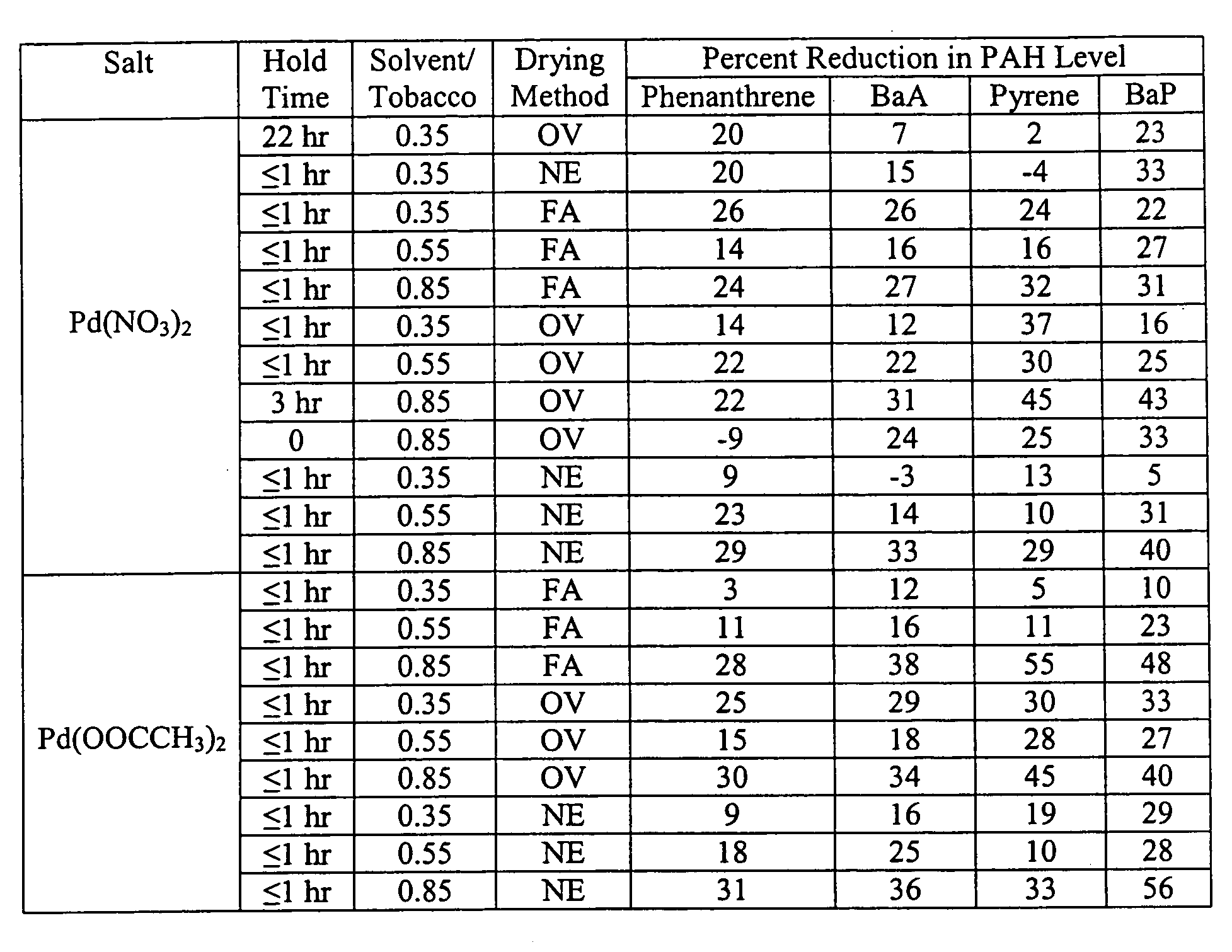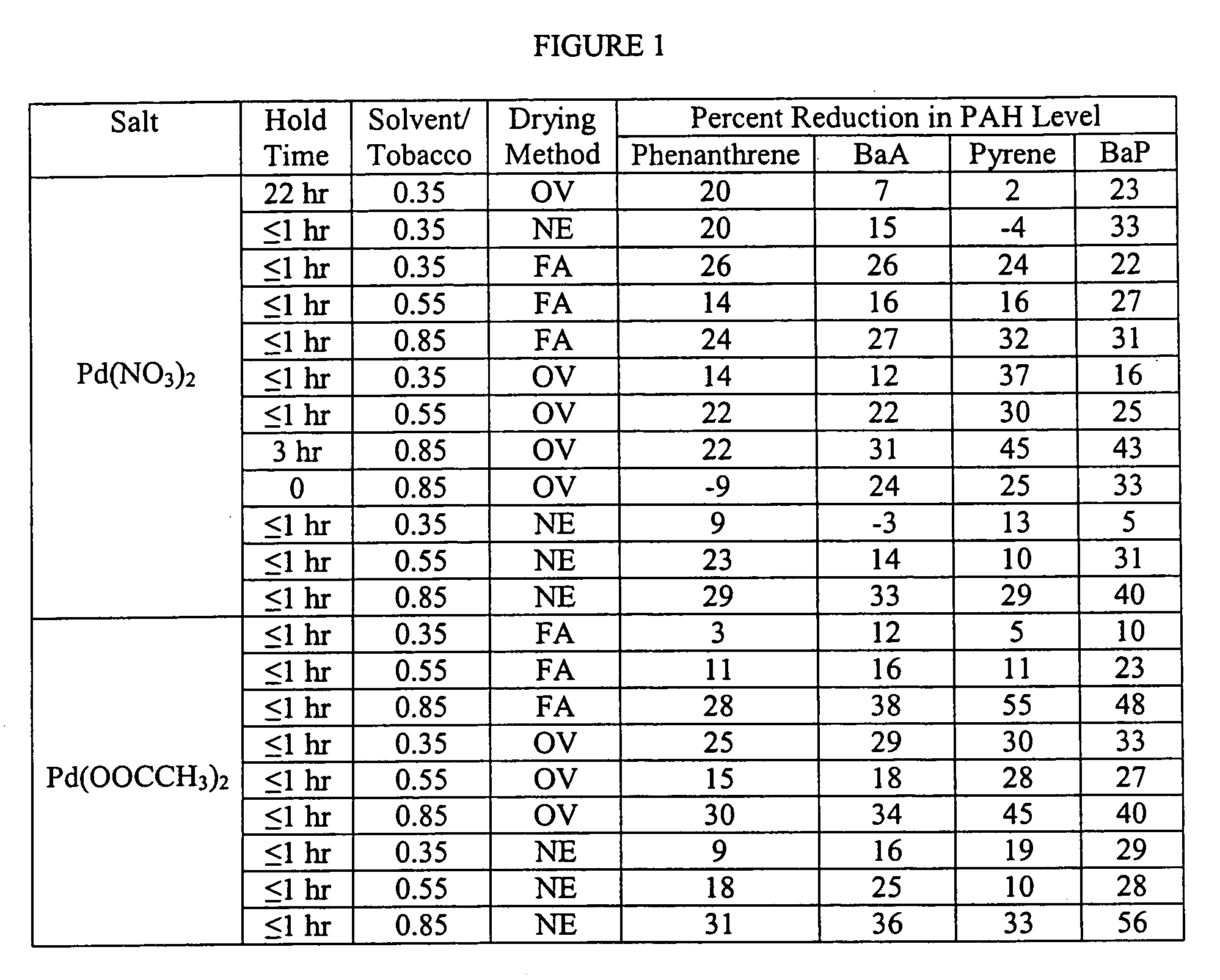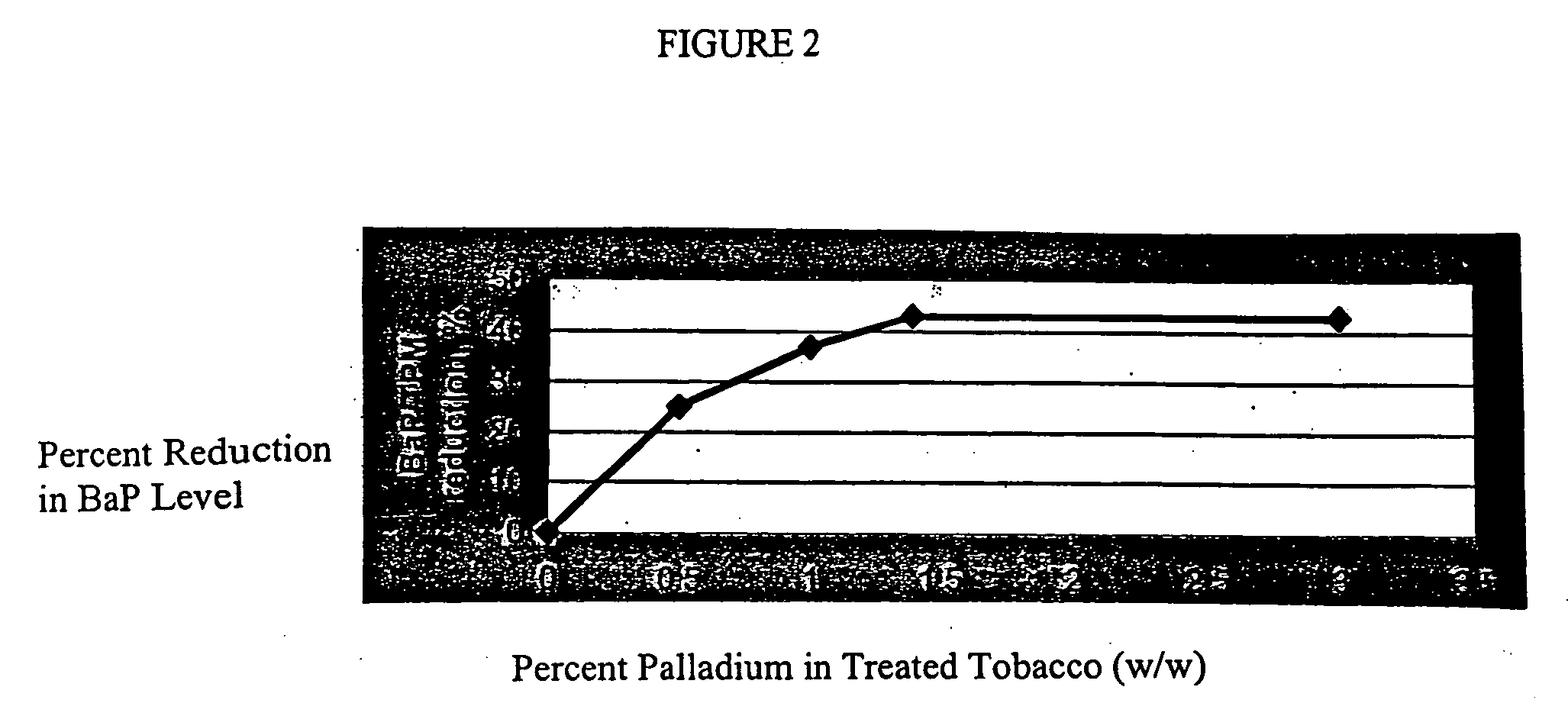Reduction of polycyclic aromatic hydrocarbons in tobacco smoke using palladium salts
a technology of aromatic hydrocarbons and palladium salts, which is applied in the field of reduction of polycyclic aromatic hydrocarbons in tobacco smoke using palladium salts, can solve the problems of requiring activation with nitrate or nitrite, and the loss of metallic particles in tobacco cut filler
- Summary
- Abstract
- Description
- Claims
- Application Information
AI Technical Summary
Benefits of technology
Problems solved by technology
Method used
Image
Examples
example 1
[0018] Tobacco was treated by spraying either a Pd(OOCCH3)2 solution or a Pd(NO3)2 solution onto “as is” tobacco. The tobacco was then dried. The concentration of metal in the resultant treated tobacco was 0.05% (w / w). The Pd(NO3)2 solution was prepared by dissolving the salt in water. The Pd(OOCCH3)2 solution was prepared by dissolving the salt in one part of acetone, followed by the addition of nine parts of water. Subsequently, the mainstream smoke of treated and untreated tobacco was analyzed for the presence of the following PAHs: phenanthrene, benzo(a)antracene (BaA), pyrene, and BaP. The percent reduction in the level of each of these PAHs was calculated using the following formula: 100(1-(level of the PAH in mainstream smoke of treated tobacco / level of the PAH in mainstream smoke of untreated tobacco)), wherein the PAH is phenanthrene, BaA, pyrene, or BaP. The results of these experiments are given in FIG. 1.
example 2
[0019] Tobacco was treated by spraying either a Pd(OOCCH3)2 solution or a Cu(OOCCH3)2•H2O solution onto “as is” tobacco. The tobacco was then dried. The Pd(OOCCH3)2 solution was prepared as described in Example 1. The Cu(OOCCH3)2•H2O solution was prepared by dissolving the salt in water. Subsequently, the mainstream smoke of treated and untreated tobacco was analyzed for the presence of BaP and other PAHs. The percent reduction in BaP level was calculated using the following formula: 100(1-(level of BaP in mainstream smoke of treated tobacco / level of BaP in mainstream smoke of untreated tobacco)). The results of these experiments are given in FIG. 2.
example 4
[0020] Tobacco was treated by spraying onto “as is” tobacco either a Pd(OOCCH3)2 solution or a Pd(OOCCH3)2 solution additionally containing mannitol and urea. The tobacco was then dried. The concentration of palladium in the resultant treated tobacco was 1.4% (w / w). The concentrations of mannitol and urea in the resultant treated tobacco containing these compounds was 10% and 5% (w / w), respectively. Subsequently, the mainstream smoke of treated and untreated tobacco was analyzed for the presence of BaP. The percent reduction in BaP level was calculated using the formula noted in Example 2. The results of these experiments are given in FIG. 3.
PUM
 Login to View More
Login to View More Abstract
Description
Claims
Application Information
 Login to View More
Login to View More - R&D
- Intellectual Property
- Life Sciences
- Materials
- Tech Scout
- Unparalleled Data Quality
- Higher Quality Content
- 60% Fewer Hallucinations
Browse by: Latest US Patents, China's latest patents, Technical Efficacy Thesaurus, Application Domain, Technology Topic, Popular Technical Reports.
© 2025 PatSnap. All rights reserved.Legal|Privacy policy|Modern Slavery Act Transparency Statement|Sitemap|About US| Contact US: help@patsnap.com



